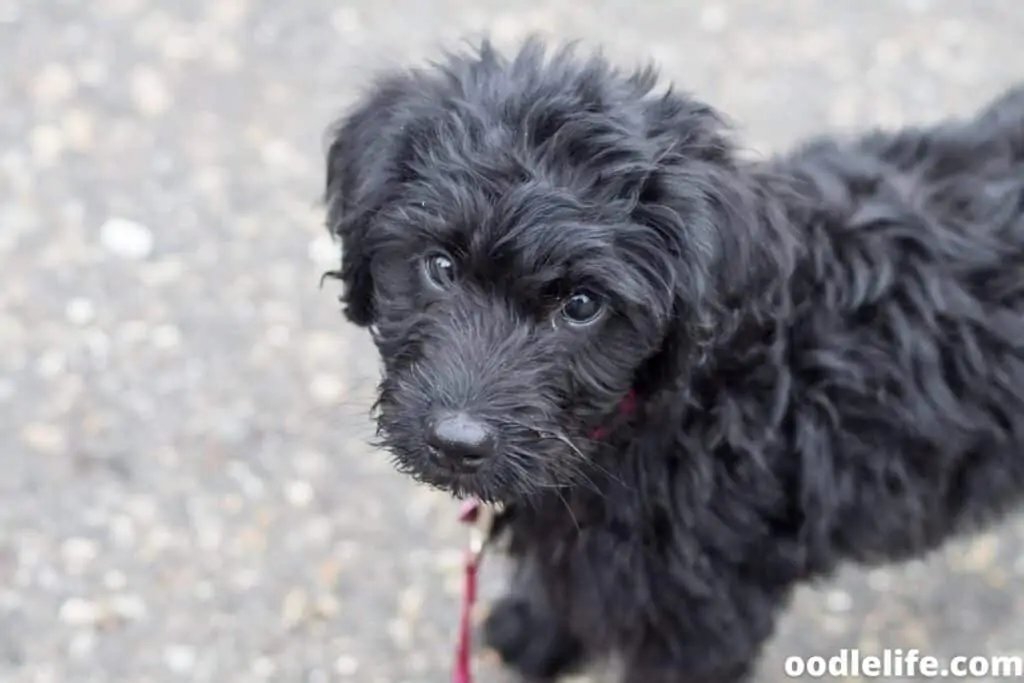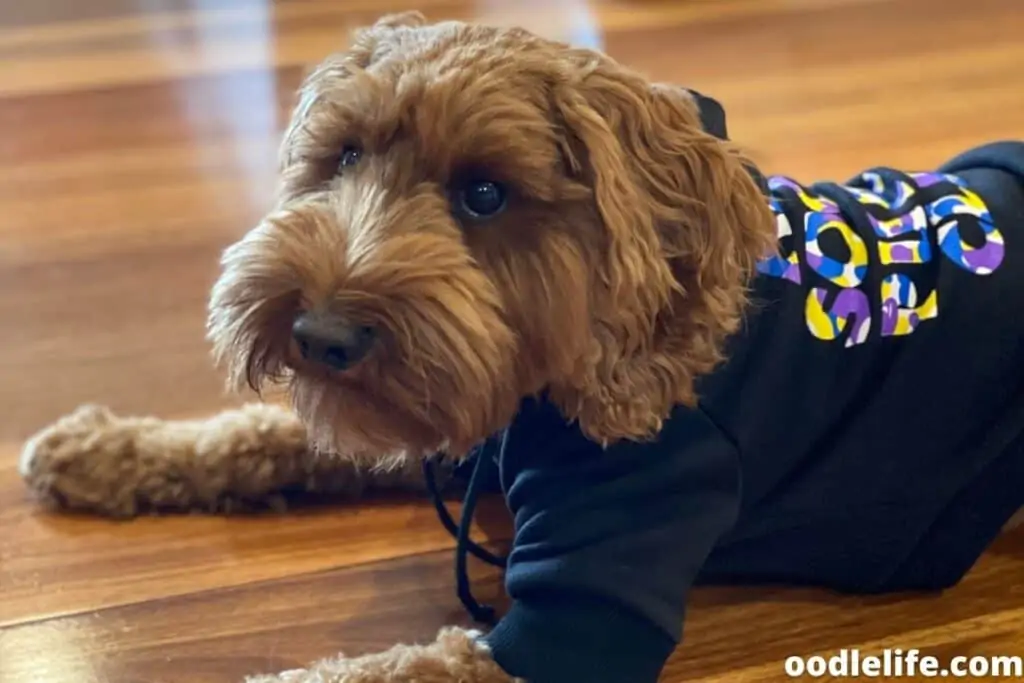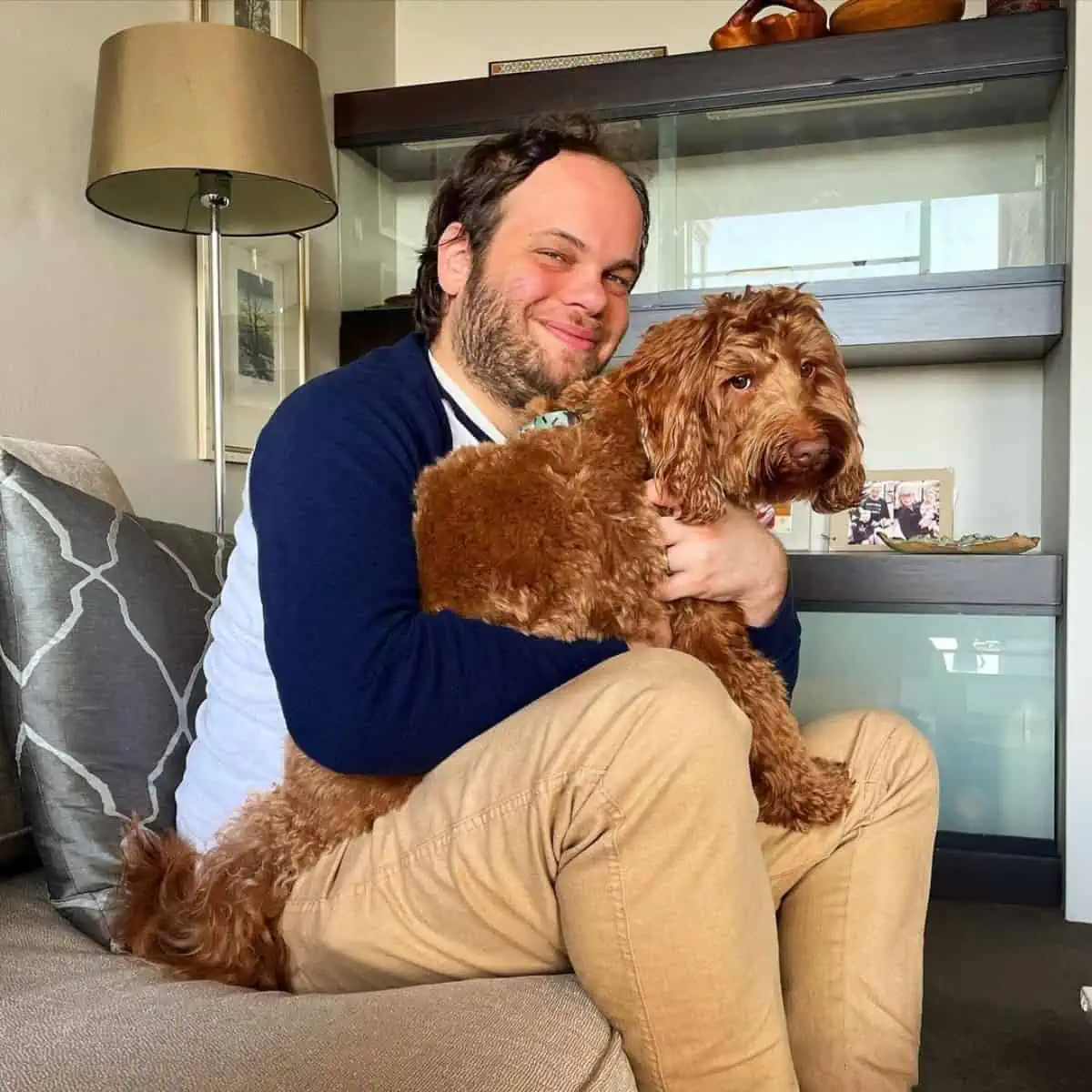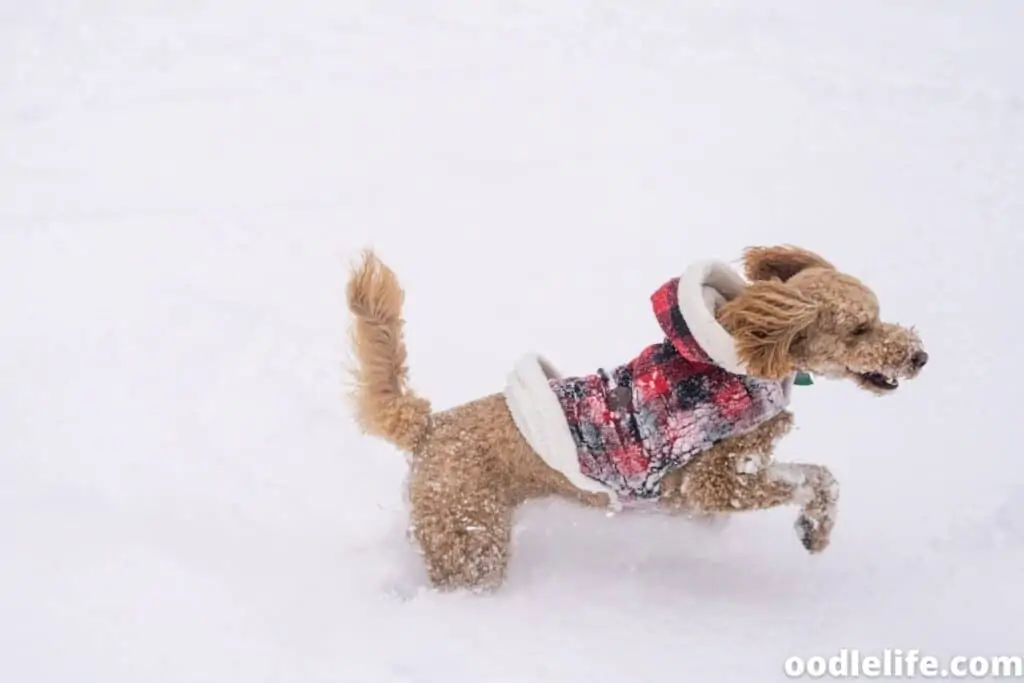Do Labradoodles Shed? Labradoodle Shedding Guide
In a perfect world, dog lovers would never have to contend with furry leftovers creeping into every crevice of their home.
Unfortunately, the reality is that no dog– not even the hypoallergenic ones– is completely shedless. The good news is that there are dogs that shed significantly less than others!

Labradoodles are commonly known as low-shed pups, but what prospective owners may not realize is that many factors determine how much hair you’ll deal with.
For canine enthusiasts wondering, “Do Labradoodles shed?” There’s no hard and fast answer. In this guide, you’ll learn all about Labradoodle shedding habits to help you prepare for the day you bring your loveable puppy home.
Are Labradoodles Hypoallergenic?
Allergy sufferers, beware. Your Labradoodle may be more than you bargained for come shedding season.

Labradoodles are often miscategorized as hypoallergenic dogs because they are a cross between Labrador retrievers and poodles.
A poodle’s tight curls give them one of the lowest shedding coats of all dog breeds, but labs are famous for their heavy sheds. The amount of hair you’ll lint roll and dust-bust depends on the percentage of each parentage your puppy has.
So, while you can rest assured that your Labradoodle will shed less than a lab, there’s no guarantee that it will inherit the ultra-tight ringlets that poodles contribute to the gene pool.
What Kind of Hair Does a Labradoodle Have?
Labradoodle coat texture depends on the traits they inherit from their parents. There are three types, only two of which are considered hypoallergenic.

Straight
A straight coat is hair-like and shaggy, more like a labrador than a poodle. That means they also tend to shed nearly as much as a lab, making this a non-hypoallergenic variation.
While you won’t see many Labradoodles with a straight coat, it’s still a definite possibility. People with allergies should avoid bringing a Labradoodle home until they are 12 weeks old because straight coats don’t come in until then.
Wavy
Wavy coats are more towards the middle of the Labradoodle shed spectrum, with curls that range from soft waves to loose coils.
Labradoodles sporting a wavy coat will shed significantly less than a straight coat, but it’s not the most hypoallergenic option of the three.
Curly
The tight ringlets of a curly Labradoodle are most similar to a poodle coat, so they are the lowest shedding variety.
Before bringing out your favorite black sweaters and throw pillows, be aware that a curly Labradoodle coat texture requires weekly grooming.
Without it, your puppy’s curls will be prone to severe matting.
Labradoodle Shed Guide
Why is my Labradoodle Shedding?
The most apparent reason why your Labradoodle sheds is because of its coat type. You can expect a straight-coated dog to shed nearly the same amount as a purebred lab, while a curly-coated canine’s fur should lose very little hair.

If you’re looking for a nearly hypoallergenic puppy, tell the breeder you’re purchasing the puppy from. They’ll have more information about the parental history and likelihood of the offspring having a particular coat type.
How Much Does a Labradoodle Shed?
The amount of shedding you can expect also depends on the type of coat and your grooming habits.

Straight-coated dogs will shed much more hair than their wavy- or curly-coated cousins, so you can expect to deal with daily dander cleanup.
Labradoodles with a curly coat will shed less but require frequent grooming to care for hair trapped in the coils. The allergy-prone should let a pro handle the brushing to avoid activating your itchy eyes and runny nose.
Which Generations of Labradoodles Shed the Most?
Breeders have worked hard to remove the straight coat trait from the Labradoodle gene pool. One of the critical indicators of whether or not a puppy will grow up with scruff similar to labs is their generation.

Breeders identify Doodle generations with an “F” and a number. In cases of backcrossing, which we’ll look at momentarily, you might also see a lowercase “b.” Finally, a “P” represents the parents.
If you look at a Labradoodle family tree, you’ll see two purebred parents. Their puppies are called the “F1” generation. The F1 generation is most likely to end up with a straight coat.
From there, Labradoodles cross with other Labradoodles or purebred poodles and labs. Labradoodles crossed with other Labradoodles continue with the F2, F3, and so on generations.
Backbred Labradoodles, or those resulting from a Labradoodle and a poodle or lab, introduce more of the purebred’s traits back into the family line.
That means that breeders who backbreed a Labradoodle with a poodle can increase the chances of a puppy having a curly, hypoallergenic coat.
How often does a Labradoodle shed?
Unlike double-coated dog breeds, Labradoodles don’t deal with seasonal shedding.

Owners can expect to see the same amount of fur lying around throughout the year, so if you notice more than usual, it could be a sign that something is wrong.
Why is my Labradoodle Shedding so Much?
Owners who notice their pal shedding more than usual should investigate the root of the issue.

Stress is one common culprit behind your Labradoodles excessive shedding. Like humans, anxiety and discomfort can cause hair loss. Consider significant changes that affect your pup’s mood, like moving homes, an increase in alone time, or bringing a new baby home.
Fleas can also cause your Labradoodle to lose their coat. Keeping up with regular treatments will prevent your beloved companion from battling bugs.
Finally, skin allergies can irritate your dog’s skin and cause it to shed excessively. Start by talking with your veterinarian, who can conduct simple tests to detect allergens in their food or environment.
Your vet may also recommend an exclusion test, where you eliminate certain foods one-by-one from your Labradoodle’s diet and see if removing one causes an improvement in skin condition.
Grooming your Labradoodle
Proper care of your Labradoodle’s coat is the key to preventing excessive shedding. Our quick guide to Labradoodle grooming will get you started, but you should speak to a vet or pro pet pamperer if you’re new to handling these unique coats.
Do I Have to Groom a Labradoodle Puppy?
From the day you bring your Labradoodle home, it’s vital to help your dog get comfortable grooming while its coats are still soft and manageable. If you wait until their adult coat comes in, it can be a very stressful experience for your dog.

Start simply with a few minutes of daily brushing and biweekly nail trims. Make it an enjoyable experience by praising them while you work.
How Often Should I Groom my Adult Labradoodle?
When your Labradoodle is around a year old, their adult coats will be well-developed and ready for weekly brushing.

You should also take your four-legged friend for trims every few months, especially if they have a curly coat. The tight texture can become unmanageable if you let the hair get too long.
Bathing
It comes as no surprise that your pal with paws needs a bath after a day spent joyfully and enthusiastically splashing through puddles. Still, it’s important to bathe your Labradoodle between the big messes, too.

Start with a thorough rinse, saturating the hair and removing all apparent signs of grime. It’s easiest to use a detachable showerhead because it lets you reach their belly and legs without much maneuvering.
Then, grab a high-quality cleanser and start scrubbing. While your fingers are deep in their coat, take the opportunity to feel around for any suspicious lumps. Unlike short-haired dogs, a Labradoodle’s curls can mask spots that a vet should check.
Rinse, then rinse again. With such dense fur, it’s easy to unintentionally leave products on their skin, which can cause irritation and dryness. Keep rinsing until the water coming off of your pup is completely clear and free of suds.
Next, you’ll dry their fur. If you’ve been training since puppyhood to sit for the blow dryer, you can go that route. Otherwise, get out a few cotton towels and start fluffing!
Last is detangling. Don’t skip this step, as you’ll have a much more challenging job ahead of you later if you don’t take care of snags immediately. Part their fresh, clean coats and get all of the extra hair that would end up on your furniture otherwise.
Give yourself plenty of time to get the job done. The dog’s coats can add some complications and increase the drying time.
Brushing
Have you heard the saying, “For healthy hair, brush 100 strokes a day?” As a Labradoodle owner, that saying becomes a lifestyle.

To keep your dog’s coat glossy and neat, you’ll spend around 20 minutes a week brushing their fur. You’ll want to invest in a quality slicker brush, which helps remove mats before they become a bigger problem.
The pins of a slicker brush are close together, allowing them to get in between the curls and detangle them from each other. Just be aware that the metal wires can cause pain if you accidentally press them into your Labradoodle’s skin.
Trimming
Every 3-4 months, take your Labradoodle for a haircut. Trimming can take care of both shedding and hair matting, particularly for dogs with tight curls.

Unlike their poodle parents with elaborate coifs, Labradoodles typically sport 1-2″ hair so that brushing is easier on you and your well-groomed pet.
Are you Prepared to Handle Labradoodle Shedding?
No dog is indeed completely shedless, but curly-haired Labradoodles come pretty close.
As long as you maintain regular grooming appropriate to their hair type, you can enjoy your darling doggy without too much concern for your allergies or whether you need to change your shirt.